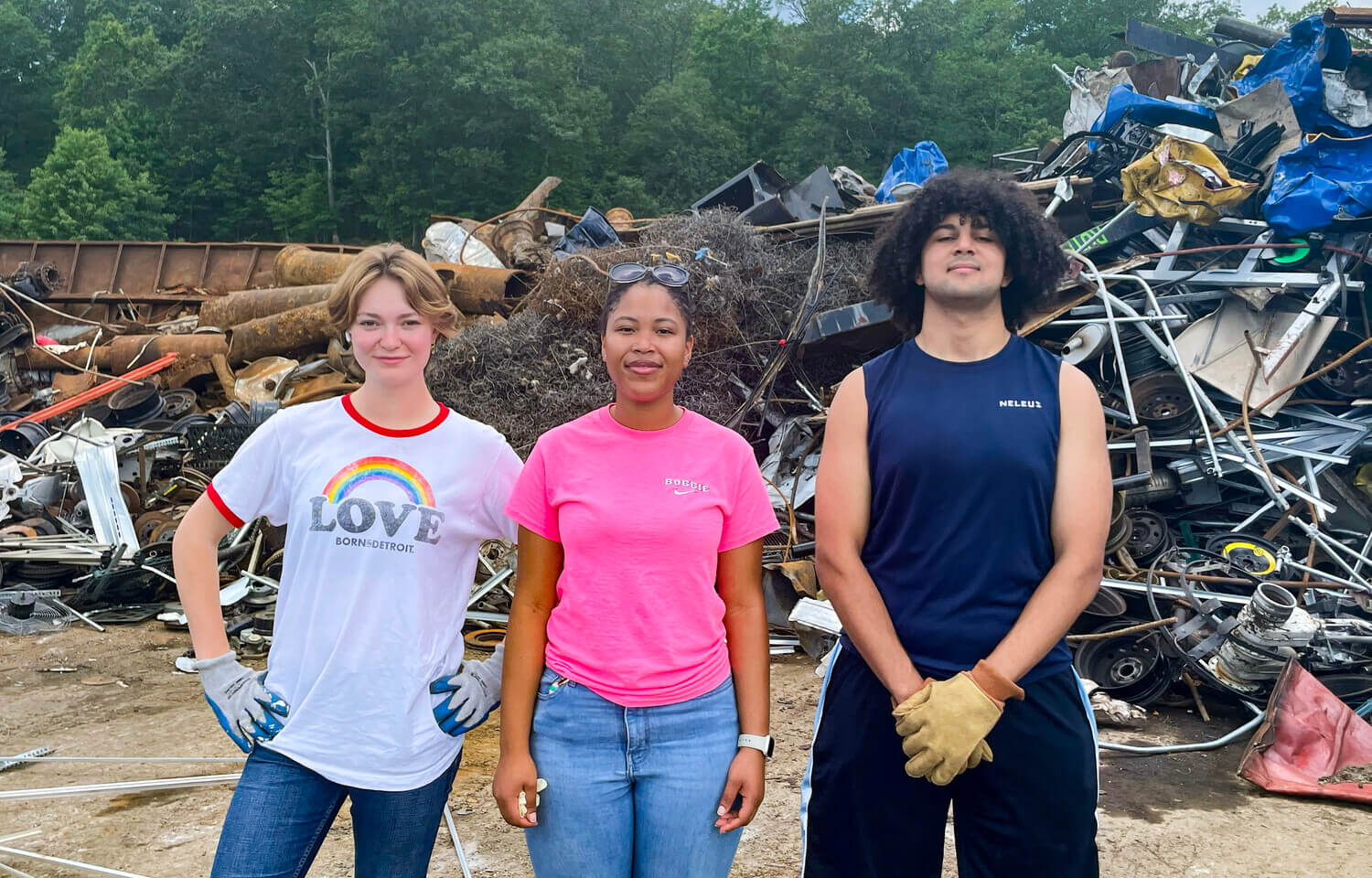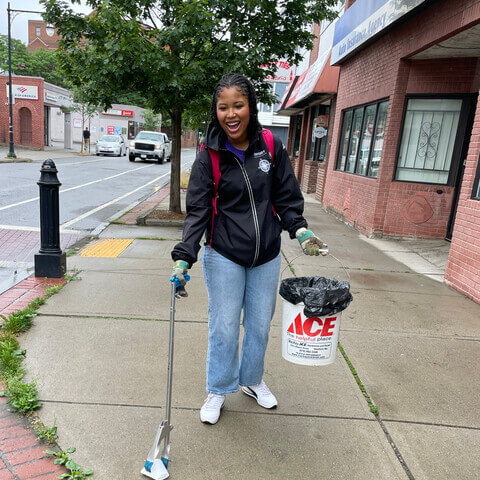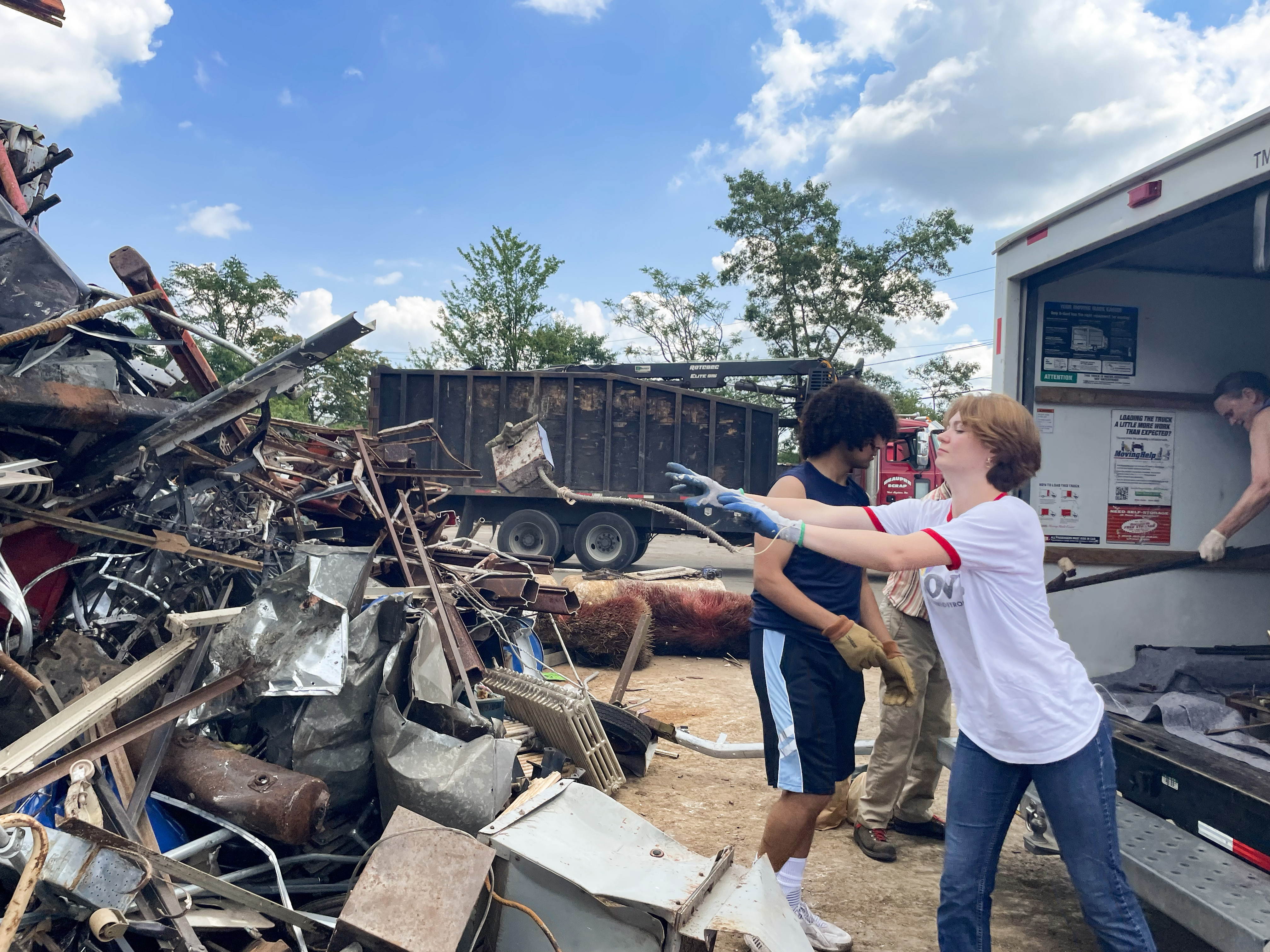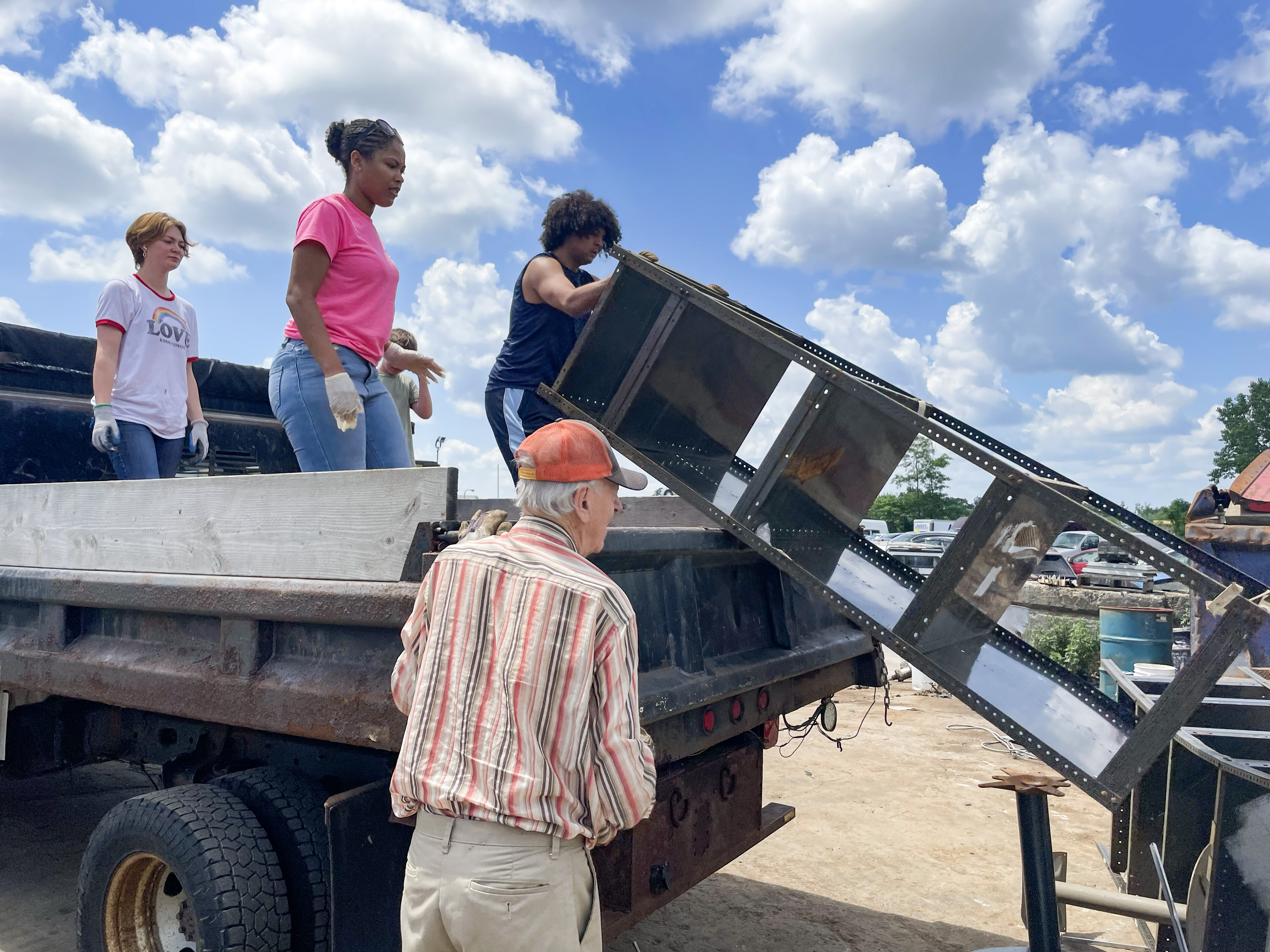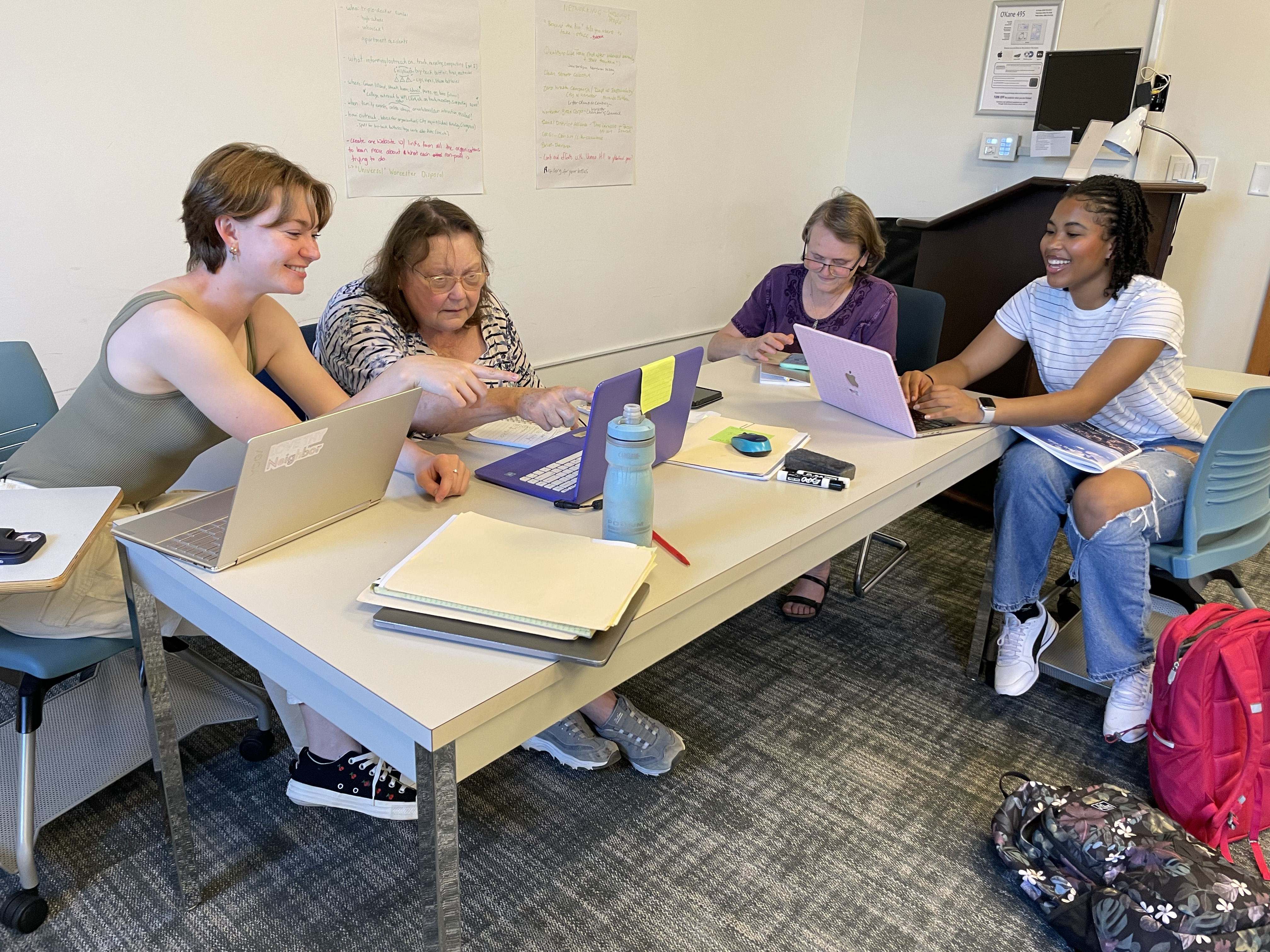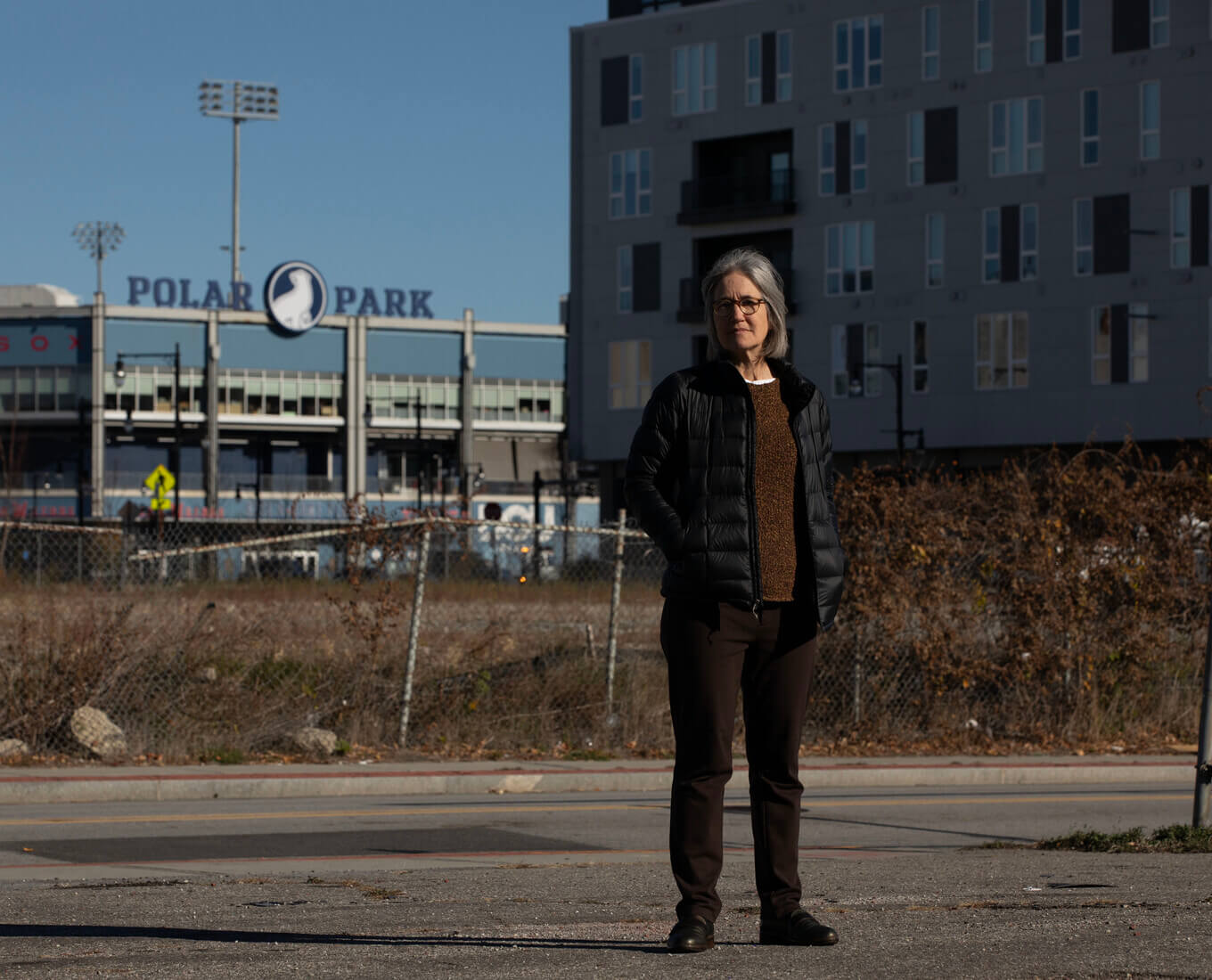Back on campus
Holy Cross isn’t immune to the problem, either. Pitts and O’Connell explained that the month of May generates the highest amount of trash for Worcester, with students from the city’s seven colleges and universities moving out over the month. “A lot of that stuff is going to get thrown away if it’s not donated effectively,” O’Connell said. Holy Cross provides donation bins in a few residence halls year-round and during move-out, as well as a dedicated technology disposal day for hard-to-recycle electronics, but the students noted that it needs to become a more frequent and normalized practice.
It’s also a daily concern. “From my personal experience, I'll look at the trash can and the recycling bin right next to it, and they look completely identical because students don't know where to put what,” O’Connell said.
The students met with Carly Thibodeau, director of sustainability at Holy Cross, to understand the College’s efforts, as well as provide some of their own suggestions, including updating the signage over the bins to reflect items students actually use, such as Cool Beans cups. “I think that if students are able to very quickly be informed, it'll improve a lot,” O’Connell added. “Students have the heart, especially at Holy Cross – we really pride ourselves on going green. I think they just need that extra push.”
Trash is also one pathway into Luria’s bigger goal: for students to become more connected to the community and environment they live in, both now and in the future.
“I want students to … see College Hill, South Worcester, Green Island through new eyes,” Luria said. “If they can do that here, they can do it wherever they end up living. The more they do that, the more chances are they'll feel interested in where they live, and perhaps even want to participate in caring for it – which is what we should all be doing.
“Trash matters,” Luria continued. “And in ways that we were surprised by – as a community organizing tool, and a community building tool, and an environmental issue. And it matters for college students extremely, as trash makers and future residents of some city or suburb that's gonna need a lot of their heart and soul if it's going to survive.”
